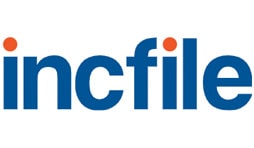Business
How to Start a Business: A Step-by-Step Guide

Starting a new small business? Find out where to begin and how to achieve success.
- You should prepare thoroughly before starting a business, but realize that things will almost certainly go awry. To run a successful business, you must adapt to changing situations.
- Conducting in-depth market research on your field and the demographics of your potential clientele is an important part of crafting a business plan. This involves running surveys, holding focus groups, and researching SEO and public data.
- In addition to selling your product or service, you need to build up your brand and get a following of people who are interested in what your business offers.
- This article is for entrepreneurs who want to learn the basic steps of starting a new business.
Starting a business can be hard work, but if you break down the process of launching your new company into individual steps you can make it easier. Rather than spinning your wheels and guessing where to start, follow this 10-step checklist to transform your business from a lightbulb above your head into a real entity.
TIP: Use a Service Like LegalZoom to Setup Your New Business Quickly and Headache-Free
From tax savings to legal protection, LegalZoom streamlines starting a business.

How to start a business
1. Refine your idea.
If you’re thinking about starting a business, you likely already have an idea of what you want to sell online, or at least the market you want to enter. Do a quick search for existing companies in your chosen industry. Learn what current brand leaders are doing and figure out how you can do it better. If you think your business can deliver something other companies don’t (or deliver the same thing, only faster and cheaper), you’ve got a solid idea and are ready to create a business plan.
Define your “why?”
“In the words of Simon Sinek, ‘always start with why,’” Glenn Gutek, CEO of Awake Consulting and Coaching, told Business News Daily. “It is good to know why you are launching your business. In this process, it may be wise to differentiate between [whether] the business serves a personal why or a marketplace why. When your why is focused on meeting a need in the marketplace, the scope of your business will always be larger than a business that is designed to serve a personal need.”
Consider franchising.
Another option is to open a franchise of an established company. The concept, brand following and business model are already in place; you only need a good location and the means to fund your operation.
Brainstorm your business name.
Regardless of which option you choose, it’s vital to understand the reasoning behind your idea. Stephanie Desaulniers, owner of Business by Dezign and former director of operations and women’s business programs at Covation Center, cautions entrepreneurs against writing a business plan or brainstorming a business name before nailing down the idea’s value.
1. LegalZoom

2. ZenBusiness

3. Incfile.com

Clarify your target customers.
Desaulniers said too often, people jump into launching their business without spending time to think about who their customers will be and why those customers would want to buy from them or hire them.
“You need to clarify why you want to work with these customers — do you have a passion for making people’s lives easier?” Desaulniers said. “Or enjoy creating art to bring color to their world? Identifying these answers helps clarify your mission. Third, you want to define how you will provide this value to your customers and how to communicate that value in a way that they are willing to pay.”
During the ideation phase, you need to iron out the major details. If the idea isn’t something you’re passionate about or if there’s no market for your creation, it might be time to brainstorm other ideas.
Tip: To refine your business idea, identify your “why,” your target customers and your business name.
2. Write a business plan.
Once you have your idea in place, you need to ask yourself a few important questions: What is the purpose of your business? Who are you selling to? What are your end goals? How will you finance your startup costs? These questions can be answered in a well-written business plan.
Fledgling business owners can make a lot of mistakes by rushing into things without pondering these aspects of the business. You need to find your target customer base. Who is going to buy your product or service? What would be the point if you can’t find evidence of a demand for your idea?
 Free Download: This business plan template can help you launch and grow your business the right way.
Free Download: This business plan template can help you launch and grow your business the right way.
Conduct market research.
Conducting thorough market research on your field and the demographics of your potential clientele is an important part of crafting a business plan. This involves conducting surveys, holding focus groups, and researching SEO and public data.
Market research helps you understand your target customer — their needs, preferences and behavior — as well as your industry and competitors. Many small business professionals recommend gathering demographic information and conducting a competitive analysis to better understand opportunities and limitations within your market.
The best small businesses have differentiated products or services from the competition. This significantly impacts your competitive landscape and allows you to convey unique value to potential customers.
Consider an exit strategy.
It’s also a good idea to consider an exit strategy as you compile your business plan. Generating some idea of how you’ll eventually exit the business forces you to look to the future.
“Too often, new entrepreneurs are so excited about their business and so sure everyone everywhere will be a customer that they give very little, if any, time to show the plan on leaving the business,” said Josh Tolley, CEO of both Shyft Capital and Kavana.
“When you board an airplane, what is the first thing they show you? How to get off of it. When you go to a movie, what do they point out before the feature begins to play? Where the exits are. During your first week of kindergarten, they line up all the kids and teach them fire drills to exit the building. Too many times I have witnessed business leaders that don’t have three or four predetermined exit routes. This has led to lower company value and even destroyed family relationships.”
A business plan helps you figure out where your company is going, how it will overcome any potential difficulties, and what you need to sustain it. When you’re ready to put pen to paper, use a free template to help.
3. Assess your finances.
Starting any business has a price, so you need to determine how you will cover those costs. Do you have the means to fund your startup, or will you need to borrow money? If you’re planning to leave your current job to focus on your business, do you have savings to support yourself until you make a profit? Find out how much your startup costs will be.
Many startups fail because they run out of money before turning a profit. It’s never a bad idea to overestimate the amount of startup capital you need, as it can take time before the business begins to bring in sustainable revenue.
Perform a break-even analysis.
One way you can determine how much money you need is to perform a break-even analysis. This essential element of financial planning helps business owners determine when their company, product or service will be profitable.
The formula is simple:
- Fixed Costs ÷ (Average Price Per Unit – Variable Costs) = Break-Even Point
Every entrepreneur should use this formula as a tool because it tells you the minimum performance your business must achieve to avoid losing money. Furthermore, it helps you understand exactly where your profits come from, so you can set production goals accordingly.
Here are the three most common reasons to conduct a break-even analysis:
- Determine profitability. This is generally every business owner’s highest interest.Ask yourself: How much revenue do I need to generate to cover all my expenses? Which products or services turn a profit, and which ones are sold at a loss?
- Price a product or service. When most people think about pricing, they consider how much their product costs to create and how competitors are pricing their products.Ask yourself: What are the fixed rates, what are the variable costs, and what is the total cost? What is the cost of any physical goods? What is the cost of labor?
- Analyze the data. Consider the volume of goods or services you would have to sell to be profitable.Ask yourself: How can I reduce my overall fixed costs? How can I reduce the variable costs per unit? How can I improve sales?
Watch your expenses.
Don’t overspend when starting a business. Understand the types of purchases that make sense for your business and avoid overspending on fancy new equipment that won’t help you reach your business goals. Monitor your business expenses to ensure you are staying on track.
“A lot of startups tend to spend money on unnecessary things,” said Jean Paldan, founder and CEO of Rare Form New Media. “We worked with a startup with two employees but spent a huge amount on office space that would fit 20 people. They also leased a professional high-end printer that was more suited for a team of 100; it had key cards to track who was printing what and when. Spend as little as possible when you start, and only on the things essential for the business to grow and succeed. Luxuries can come when you’re established.”
 Tip: Using accounting software can streamline your expense tracking. Read our reviews of the best accounting software to learn more and find the right platform for your needs. Try starting with our Intuit QuickBooks Online review — this vendor is our top pick for small businesses.
Tip: Using accounting software can streamline your expense tracking. Read our reviews of the best accounting software to learn more and find the right platform for your needs. Try starting with our Intuit QuickBooks Online review — this vendor is our top pick for small businesses.
Consider your funding options.
Startup capital for your business can come from various means. The best way to acquire funding for your business depends on several factors, including creditworthiness, the amount needed and available options.
- Business loans. If you need financial assistance, a commercial loan through a bank is a good starting point, although these are often difficult to secure. If you cannot take out a bank loan, apply for a small business loan through the S. Small Business Administration (SBA) or an alternative lender.
- Business grants. Business grants are similar to loans, but do not need to be paid back. Business grants are typically very competitive and come with stipulations that the business must meet to be considered. When securing a small business grant, look for ones specific to your situation. Options include minority-owned business grants, grants for women-owned businesses and government grants.
- Startups that require significant funding up front may want to bring on an angel investor. Investors can provide several million dollars or more to a fledgling company in exchange for a hands-on role in running your business.
- Alternatively, you can launch an equity crowdfunding campaign to raise smaller amounts of money from multiple backers. Crowdfunding has helped numerous companies in recent years, and dozens of reliable crowdfunding platforms are designed for different types of businesses.
You can learn more about each of these capital sources and more in our guide to startup finance options.
Choose the right business bank.
When you’re choosing a business bank, size matters. Marcus Anwar, co-founder of OhMy Canada, recommends smaller community banks because they are in tune with the local market conditions and will work with you based on your overall business profile and character.
“They’re unlike big banks that look at your credit score and will be more selective to loan money to small businesses,” Anwar said. “Not only that, but small banks want to build a personal relationship with you and ultimately help you if you run into problems and miss a payment. Another good thing about smaller banks is that decisions are made at the branch level, which can be much quicker than big banks, where decisions are made at a higher level.”
Anwar believes that you should ask yourself these questions when choosing a bank for your business:
- What is important to me?
- Do I want to build a close relationship with a bank that’s willing to help me in any way possible?
- Do I want to be just another bank account, like big banks will view me as?
Ultimately, the right bank for your business comes down to your needs. Writing down your banking needs can help narrow your focus to what you should be looking for. Schedule meetings with various banks and ask questions about how they work with small businesses to find the best bank for your business.
 Key takeaway: Financially, you should perform a break-even analysis, consider your expenses and funding options, and choose the right bank for your business.
Key takeaway: Financially, you should perform a break-even analysis, consider your expenses and funding options, and choose the right bank for your business.
4. Determine your legal business structure.
Before registering your company, you need to decide what kind of entity it is. Your business structure legally affects everything from how you file your taxes to your personal liability if something goes wrong.
- Sole proprietorship: You can register for a sole proprietorship if you own the business independently and plan to be responsible for all debts and obligations. Be warned that this route can directly affect your personal credit.
- Partnership: Alternatively, as its name implies, a business partnership means that two or more people are held personally liable as business owners. You don’t have to go it alone if you can find a business partner with complementary skills to your own. It’s usually a good idea to add someone into the mix to help your business flourish.
- Corporation: If you want to separate your personal liability from your company’s liability, consider the pros and cons of corporations (e.g., an S corporation or C corporation). Although each type of corporation is subject to different guidelines, this legal structure generally makes a business a separate entity from its owners. Therefore, corporations can own property, assume liability, pay taxes, enter contracts, sue and be sued like any other individual. “Corporations, especially C corporations, are especially suitable for new businesses that plan on ‘going public’ or seeking funding from venture capitalists in the near future,” said Deryck Jordan, managing attorney at Jordan Counsel.
- Limited liability company: One of the most common structures for small businesses is the limited liability company (LLC). This hybrid structure has the legal protections of a corporation while allowing for the tax benefits of a partnership.
Ultimately, it is up to you to determine which type of entity is best for your current needs and future business goals. It’s important to learn about the various legal business structures available. If you’re struggling to make up your mind, discussing the decision with a business or legal advisor is a great idea.
Did you know? You need to choose a legal structure for your business, such as a sole proprietorship, partnership, corporation or LLC.
5. Register with the government and IRS.
You will need to acquire business licenses before you can legally operate your business. For example, you must register your business with federal, state and local governments. There are several documents you must prepare before registering.
Articles of incorporation and operating agreements
To become an officially recognized business entity, you must register with the government. Corporations need an articles of incorporation document, which includes your business name, business purpose, corporate structure, stock details and other information about your company. Similarly, some LLCs will need to create an operating agreement.
Doing business as (DBA)
If you don’t have articles of incorporation or an operating agreement, you will need to register your business name, which can be your legal name, a fictitious DBA name (if you are the sole proprietor), or the name you’ve come up with for your company. You may also want to take steps to trademark your business name for extra legal protection.
Most states require you to get a DBA. You may need to apply for a DBA certificate if you’re in a general partnership or a sole proprietorship operating under a fictitious name. Contact or visit your local county clerk’s office to ask about specific requirements and fees. Generally, there is a registration fee involved.
Employer identification number (EIN)
After you register your business, you may need to get an employer identification number from the IRS. While this is not required for sole proprietorships with no employees, you may want to apply for one anyway to keep your personal and business taxes separate, or to save yourself the trouble if you decide to hire someone later on. The IRS has provided a checklist to determine whether you will require an EIN to run your business. If you do need an EIN, you can register online for free.
Income tax forms
You must file certain forms to fulfill your federal and state income tax obligations. Your business structure determines the forms you need. You will need to check your state’s website for information on state-specific and local tax obligations. Once you set this all up, the best online tax software can help you file and pay your taxes quarterly and annually.
“You might be tempted to wing it with a PayPal account and social media platform, but if you start with a proper foundation, your business will have fewer hiccups to worry about in the long run,” said Natalie Pierre-Louis, licensed attorney and owner of NPL Consulting.
Federal, state, and local licenses and permits
Some businesses may also require federal, state or local licenses and permits to operate. Your local city hall is the best place to obtain a business license. You can then use the SBA’s database to search for state and business type licensing requirements.
Businesses and independent contractors in certain trades are required to carry professional licenses. A commercial driver’s license (CDL) is one example of a professional business license. Individuals with a CDL can operate certain types of vehicles, such as buses, tank trucks and tractor-trailers. A CDL is divided into three classes: Class A, Class B and Class C.
You should also check with your city and state to find out if you need a seller’s permit that authorizes your business to collect sales tax from your customers. A seller’s permit goes by numerous names, including resale permit, resell permit, permit license, reseller permit, resale ID, state tax ID number, reseller number, reseller license permit or certificate of authority.
It’s important to note that these requirements and names vary from state to state. You can register for a seller’s permit through the state government website of the state(s) you’re doing business in.
Jordan says that not all businesses need to collect sales tax (or obtain a seller’s permit).
“For example, New York sales tax generally is not required for the sale of most services (such as professional services, education, and capital improvements to real estate), medicine or food for home consumption,” Jordan said. “So, for example, if your business only sells medicine, you do not need a New York seller’s permit. But New York sales tax must be collected in conjunction with the sale of new tangible personal goods, utilities, telephone service, hotel stays, and food and beverages (in restaurants).”
Key takeaway: Register key documents like articles of incorporation or an operating agreement, a DBA, an EIN, income tax forms, and other applicable licenses and permits.
6. Purchase an insurance policy.
It might slip your mind as something you intend to get around to eventually, but purchasing the right insurance for your business is an important step to take before you officially launch. Dealing with incidents such as property damage, theft or even a customer lawsuit can be costly, and you need to be sure that you’re properly protected.
Although you should consider several types of business insurance, there are a few basic insurance plans that most small businesses can benefit from. For example, if your business will have employees, you will at least need to purchase workers’ compensation and unemployment insurance.
You may also need other types of coverage, depending on your location and industry, but most small businesses are advised to purchase general liability (GL) insurance, or a business owner’s policy. GL covers property damage, bodily injury, and personal injury to yourself or a third party.
If your business provides a service, you may also want professional liability insurance. It covers you if you do something wrong or neglect to do something you should have done while operating your business.
7. Build your team.
Unless you’re planning to be your only employee, you’ll need to recruit and hire a great team to get your company off the ground. Joe Zawadzki, general partner at AperiamVentures, said entrepreneurs need to give the “people” element of their businesses the same attention they give their products.
“People build your product,” Zawadzki said. “Identifying your founding team, understanding what gaps exist, and [determining] how and when you will address them should be top priority. Figuring out how the team will work together … is equally important. Defining roles and responsibilities, division of labor, how to give feedback, or how to work together when not everyone is in the same room will save you a lot of headaches down the line.”
8. Choose your vendors.
Running a business can be overwhelming, and you and your team probably aren’t going to be able to do it all on your own. That’s where third-party vendors come in. Companies in every industry, whether that’s HR or business phone systems, exist to partner with you and help you run your business better. For example, with a business phone system, you can design an IVR system to automatically route your callers to the right representatives.
When you’re searching for B2B partners, choose carefully. These companies will have access to your most vital and potentially sensitive business data, so finding someone you can trust is critical. In our guide to choosing business partners, our expert sources recommended asking potential vendors about their experience in your industry, their track record with existing clients, and what kind of growth they’ve helped other clients achieve.
Not every business will need the same type of vendors, but there are common products and services that almost every business will need. Consider the following functions that are a necessity for any type of business.
- Enabling multiple customer payment types: Offering multiple payment options will ensure you can make a sale in whatever format is easiest for the target customer. Compare options to find the best credit card processing provider to ensure you’re getting the best rate for your business. That’s because small business credit card processing is often a direct route to more revenue and a larger customer base.
- Taking customer payments: Set up a point-of-sale (POS) system so that you have a state-of-the-art interface for making sales. The best POS systems couple this payment technology — which largely overlaps with credit card processing — with inventory management and customer management features. As such, POS systems are especially important if you plan to sell products instead of offering services.
- Managing finances: Many business owners manage their own accounting functions when starting their business, but as your business grows, you can save time by hiring an accountant, or by choosing the right accounting software provider.
9. Brand yourself and advertise.
Before you start selling your product or service, you need to build up your brand and get a following of people who are ready to jump when you open your literal or figurative doors for business.
- Company website: Take your reputation online and build a company website. Many customers turn to the internet to learn about a business, and a website is a digital proof that your small business exists. It is also a great way to interact with current and potential customers.
- Social media: Use social media to spread the word about your new business, perhaps as a promotional tool to offer coupons and discounts to followers once you launch. The best social media platforms to use will depend on your target audience.
- CRM: The best CRM platforms allow you to store customer data to improve how you market to them. A well-thought-out email marketing campaign can do wonders for reaching customers and communicating with your audience. To be successful, you will want to strategically build your email marketing contact list.
- Logo: Create a logo to help people easily identify your brand, and use it across all of your platforms.
Keep your digital assets up to date with relevant, interesting content about your business and industry. According to Ruthann Bowen, chief marketing officer at EastCamp Creative, too many startups have the wrong mindset about their websites.
“The issue is they see their website as a cost, not an investment,” Bowen said. “In today’s digital age, that’s a huge mistake. The small business owners who understand how critical it is to have a great online presence will have a leg up on starting out strong.”
Creating a marketing plan that goes beyond your launch is essential to building a clientele because it should continually get the word out about your business. This process is just as important as providing a quality product or service, especially in the beginning.
Ask customers to opt into your marketing communications.
As you build your brand, ask your customers and potential customers for permission to communicate with them. The easiest way to do this is by using opt-in forms of consent. These forms allow you to contact them with further information about your business, according to Dan Edmonson, founder and CEO of Dronegenuity.
“These types of forms usually pertain to email communication and are often used in e-commerce to request permission to send newsletters, marketing material, product sales, etc. to customers,” Edmonson said. “Folks get so many throwaway emails and other messages these days that, by getting them to opt in to your services transparently, you begin to build trust with your customers.”
Opt-in forms are a great starting point for building trust and respect with potential customers. Even more importantly, these forms are required by law. The CAN-SPAM Act of 2003 sets requirements for commercial email by the Federal Trade Commission. This law doesn’t just apply to bulk email; it covers all commercial messages, which the law defines as “any electronic mail message the primary purpose of which is the commercial advertisement or promotion of a commercial product or service.” Each email violating this law is subject to fines of more than $40,000.
Tip: Create a strategic marketing campaign that combines various marketing channels, like a company website, social media, email newsletters and opt-in forms.
Your launch and first sales are only the beginning of your task as an entrepreneur. To make a profit and stay afloat, you always need to be growing your business. That takes time and effort, but you’ll get out of your business what you put into it.
Collaborating with more established brands in your industry is a great way to achieve growth. Reach out to other companies and ask for some promotion in exchange for a free product sample or service. Partner with a charity organization, and volunteer some of your time or products to get your name out there.
While these tips will help launch your business and get you set to grow, there’s never a perfect plan. You want to ensure you prepare thoroughly for starting a business, but things will almost certainly go awry. To run a successful business, you must adapt to changing situations.
FAQs about starting a business
What are the four basics for starting a business?
The four basics for starting a business are your business name, business structure, business registration certificate and all your other licenses. You must take the proper legal and regulatory steps in each of these four areas before you launch your business. Obtaining external funding and putting together a business plan are also smart moves, but they aren’t legal prerequisites.
How can I start my own business with no money?
You can launch a successful business without any startup funds. Work on a business idea that builds on your skill set to offer something new and innovative to the market. While developing a new business, keep working in your current position to reduce the financial risk.
Once you’ve developed your business idea and are ready to start on a business plan, you’ll need to get creative with funding. You can raise money through investments by pitching your idea to financial backers. You could also gather funding through crowdsourcing platforms like Kickstarter, or set aside a certain amount of money from your weekly earnings to put toward a new business. Finally, you can seek loan options from banks and other financial institutions to get your company up and running.
 Tip: Check out our list of low-cost business ideas for inspiration on how to start a new company when you’re on a tight budget.
Tip: Check out our list of low-cost business ideas for inspiration on how to start a new company when you’re on a tight budget.
What is the easiest business to start?
The easiest business to start is one that requires little to no financial investment upfront, and no extensive training to learn the business. A dropshipping company, for example, is one of the easiest types of new business to launch. Dropshipping requires no inventory management, which saves you the hassle of buying, storing and tracking stock.
Instead, another company fulfills your customer orders at your behest. This company manages the inventory, packages goods, and ships out your business orders. To start, create an online store by selecting curated products from the catalog available through partners.
 Key takeaway: Check out our list of businesses you can start quickly for ideas on how to launch your next business with ease.
Key takeaway: Check out our list of businesses you can start quickly for ideas on how to launch your next business with ease.
Which types of businesses can I start from home?
In today’s world of remote work, you may be thinking of an online business idea. Any online-only business that doesn’t require inventory should be easy to start from home. Ideas that fall within this category include but aren’t limited to copywriting businesses, online tutoring operations and dropshipping businesses. Anything you’re good at or passionate about that you can do from home, and for which demand exists, can make for a great home business.
When is the best time to start a business?
Each person’s ideal timeline for starting a new business will be different. Start a business only when you have enough time to devote your attention to the launch. If you have a seasonal product or service, then you should start your business one quarter before your predicted busy time of the year. Spring and fall are popular times of year to launch for nonseasonal companies. Winter is the least popular launch season because many new owners prefer to have their LLC or corporation approved for a new fiscal year.
Business
How to Find the Best Deals on Second-Hand Mobiles Through Online Shopping

Buying a second-hand mobile is a smart choice, especially when you’re looking for a high-quality phone at an affordable price. But where do you find the best deals, and how can you ensure you’re getting a reliable device? Here are some tips to help you find the perfect second-hand mobile online.
1. Choose Trusted Online Marketplaces
To get a good deal on a second-hand mobile, start by browsing trusted platforms that specialize in refurbished or used devices. Some popular options include:
- eBay: Known for its wide range of sellers and products, including second-hand phones.
- Swappa: Focused on selling used phones directly from users, with a detailed vetting process.
- Amazon Renewed: Offers certified refurbished phones, often with warranties.
- Facebook Marketplace: A local option to find used mobiles nearby for direct exchanges.
These platforms provide a range of options, so you can compare prices, check seller reviews, and find the best deals.
2. Set a Budget and Stick to It
It’s easy to get carried away when shopping online, especially when you see premium models at discounted rates. To avoid overspending, set a clear budget for yourself before you begin your search. Make sure to consider additional costs like shipping and taxes.
3. Compare Prices Across Different Sellers
One of the best strategies for finding a great deal is comparing prices across multiple sellers. Don’t just settle for the first listing you find. Use comparison tools or manually browse various sellers on platforms like eBay or Swappa to see if there’s a better offer elsewhere.
4. Check for Warranty and Return Policies
When purchasing a second-hand mobile, it’s essential to look for listings that come with a warranty or return policy. Many platforms offer refurbished phones with limited warranties, which can protect you if the phone stops working shortly after purchase. A good return policy also gives you peace of mind in case the product doesn’t meet your expectations.
5. Read Reviews and Seller Ratings
Before making a final purchase, always read customer reviews and check the seller’s ratings. Reliable platforms like eBay and Amazon provide detailed seller feedback, giving you insight into the quality of the product and the trustworthiness of the seller. Avoid sellers with low ratings or negative reviews to minimize the risk of a bad experience.
6. Consider the Phone’s Condition
Used phones are sold in varying conditions. Be sure to understand the condition of the phone you’re buying, whether it’s labeled as “Like New,” “Refurbished,” or “Used.” Phones that are “Like New” typically have minimal wear and tear, while “Refurbished” devices have undergone repairs to function like new. “Used” phones may have visible damage but still function well. Always read the product descriptions carefully to know what to expect.
7. Look for Discounts and Coupons
Many online platforms offer seasonal discounts, flash sales, or coupons that can help you save even more on your second-hand mobile. Keep an eye out for promotions, especially during Black Friday, Cyber Monday, or end-of-year sales. Websites like eBay and Amazon frequently run sales, so it’s worth waiting for the right deal.
8. Verify the Phone’s Specifications
When buying a second-hand mobile, make sure the phone meets your needs. Double-check specifications such as:
- Battery Life: Ensure it has good battery health, especially for older models.
- Storage Capacity: Choose a model with enough storage for your apps, photos, and media.
- Software Updates: Confirm whether the phone is capable of running the latest software.
- Unlocked or Carrier-Locked: If the phone is carrier-locked, make sure it’s compatible with your carrier.
Having a clear idea of what you need ensures that you won’t regret your purchase later.
9. Avoid Common Scams
Unfortunately, scams can be common in the world of second-hand mobile shopping. To avoid falling victim to fraudulent sellers, only purchase from reputable platforms with buyer protection policies. Always use secure payment methods, like PayPal, that offer additional security and dispute resolution in case something goes wrong.
10. Test the Phone Upon Arrival
Once your phone arrives, test it immediately to ensure everything works as expected. Check the touchscreen, cameras, speakers, buttons, and charging
port. If the device doesn’t function properly or has damage that wasn’t disclosed, contact the seller or platform’s customer support right away to initiate a return or exchange.
Conclusion
Finding the best deals on second hand mobile online shopping can save you a significant amount of money without sacrificing quality. By following these steps—choosing trusted platforms, comparing prices, and checking reviews—you can confidently make a purchase that fits your budget and meets your needs. Happy shopping!
Business
Mueller Settlement Amazon: Navigating the Legal Landscape

Learn more about the intricacies of the Mueller Settlement Amazon, the consequences for Amazon legally and how it affected the company’s image. Discover the background, the thoughts of experts, and the steps Amazon took to win back customer confidence. Learn all about this retail giant’s struggles, triumphs, and plans for the future.
Introduction
Much attention has been focused on the Mueller settlement with Amazon in the intricate e-commerce industry. This article examines the origins, legal ramifications, and influence on Amazon’s reputation of this deal, among other complexities.
Understanding Mueller Investigation
What is Mueller Settlement Amazon?
A number of Amazon’s business activities were the subject of the inquiry that led to the Mueller settlement. To fully realise the implications of the settlement, it is vital to understand where this inquiry came from.
Significance of the Settlement
Understanding the settlement’s utmost significance in the business realm requires delving into the conclusions of the Mueller investigation and Amazon’s participation.
Legal Implications
Mueller Report Overview
A synopsis of the Mueller report explains the complex legal landscape that Amazon faced. To grasp the seriousness of the settlement, it is necessary to unravel the main conclusions and what they mean.
Amazon’s Legal Responses
In responding to the claims made in the Mueller report, Amazon’s legal staff was helpful. In this part, we will take a look at the methods Amazon used to protect its interests.
Settlement Details
Terms and Conditions
To further understand what Amazon was required to do, it is helpful to review the settlement agreement’s terms and conditions. Understanding the breadth of the settlement requires uncovering the financial ramifications for Amazon.
Impact on Amazon’s Reputation
Public Perception
Public opinion may have just as much of an effect as a court of law. It is instructive to compare popular opinion of Amazon before, during, and after the settlement.
Media Coverage
The media’s coverage of the Mueller settlement was essential in establishing its narrative. The impact on Amazon’s reputation as a result of the media attention is examined in this section.
Amazon’s Response Strategy
Communication Tactics
It takes finesse to communicate at a settlement. To make sense of what happened next, you had to know how Amazon strategically conveyed its position.
Changes Post Settlement
After the payment, Amazon made certain adjustments to fix its reputation. Taking a look at these adjustments shows how seriously the organisation takes the idea of learning from the mistake.
Lessons Learned
Corporate Responsibility
Many people started talking about corporate accountability after the Mueller deal. In this part, we’ll look at what other companies, including Amazon, have learnt.
Future Implications for Companies
Companies may learn a lot about how to deal with future problems like this by looking at the bigger picture of how the settlement affected their actions.
Expert Opinions
Legal Experts’ Take
Views on the Mueller settlement were expressed by legal professionals. Gaining insight into their viewpoints enriches the examination.
Business Analysts’ Perspectives
Analysts from the business world provide light on the potential financial consequences. Gaining insight into their viewpoints allows for a more complete picture to be painted.
Mueller Settlement Amazon: A Timeline
Key Events
To make sense of what’s happening, it’s helpful to go over the major points of the Mueller deal in chronological order.
Milestones in the Settlement
Readers may easily follow the events that had place by locating key points in the settlement chronology.
Consumer Trust Regained
Measures Taken by Amazon
Amazon did some things to win back the confidence of its customers. By breaking down these steps, we can see how seriously the business takes its consumers’ needs.
Customer Feedback
It is critical to pay close attention to what customers have to say. To gauge the success of Amazon’s campaigns, it is helpful to examine consumer comments made after the settlement.
Positive Outcomes
Changes in Corporate Practices
As a result of the Mueller settlement, Amazon revised and updated certain of its business policies. Looking at these developments highlights the benefits of the settlement.
Industry-wide Impact
Beyond Amazon, the settlement’s effects were felt. The effects of the settlement on the industry as a whole are discussed in this section.
Challenges Faced
Internal Struggles
Both during and after the settlement, Amazon encountered difficulties internally. The larger story gains depth from an appreciation of these challenges.
External Backlash
Amazon faced criticism from other sources. Managing a company’s reputation after a settlement is complicated, but it becomes clearer when you look at the external issues.
Success Stories Post Settlement
Amazon’s Growth
The fact that Amazon has continued to grow since the settlement shows how resilient the corporation is. A positive outlook might be gained by delving into this growth tale.
Positive Repercussions
One way to look at the bright side of things is to consider the good things that have come out of the settlement.
The Future of Amazon
Sustainability Efforts
After the settlement, Amazon made sustainability an even bigger priority. By delving into these initiatives, we can better understand the firm’s dedication to ethical business practices.
Ongoing Commitment
The commitment of Amazon to learning from the settlement and making wise adjustments will determine its future.
Conclusion
Last but not least, the path to a Mueller deal with Amazon has been one of profound change. To better overcome obstacles, organisations would do well to understand the legal, reputational, and operational ramifications.
FAQs
Is the Mueller settlement a setback for Amazon’s growth?
Amazon overcame obstacles presented by the settlement and continued to develop as a result.
How did the public react to the settlement?
Both proponents and detractors of the idea voiced differing views in response to the public outcry.
Were there long-term consequences for Amazon?
Improvements in corporate responsibility and shifts in business practices were among the long-term effects.
Business
10 Top Photo Tiles, Wall Art, and Canvas Prints Companies

Introduction
In today’s digital age, we capture countless moments with our cameras and smartphones, but often these memories remain trapped in the digital realm. Fortunately, there are companies that specialize in turning your cherished photos into stunning pieces of art that you can proudly display in your home. From photo tiles to canvas prints, these companies offer a wide range of options to transform your memories into beautiful decor. In this article, we’ll explore the top 10 companies that excel in this field, with special mention to Wallpics, a standout choice.
-
Shutterfly
Shutterfly has long been a household name in the world of personalized photo products. They offer an array of options, including canvas prints, framed prints, and acrylic prints, allowing you to transform your photos into elegant wall art. Shutterfly’s user-friendly website and customization tools make it easy to create personalized pieces that suit your style.
-
CanvasPop
CanvasPop is known for its high-quality canvas prints. They use premium materials and advanced printing techniques to ensure your photos are reproduced with vivid colors and sharp details. CanvasPop offers a range of customization options, allowing you to choose the perfect size and frame to match your decor.
-
Mixtiles
Mixtiles specializes in photo tiles, making it easy to create a unique wall display. Their peel-and-stick tiles are not only convenient to install but also offer a modern and sleek look. You can rearrange them easily, ensuring your wall art is always fresh and appealing.
-
Printique
Formerly known as AdoramaPix, Printique is a trusted name in the world of photography. They offer a variety of printing options, including canvas prints and metal prints, all of which are known for their exceptional quality. With Printique, you can be confident that your photos will be turned into beautiful works of art.
-
Easy Canvas Prints
As the name suggests, Easy Canvas Prints makes the process of creating canvas prints a breeze. Their user-friendly website guides you through the customization process, allowing you to choose from various sizes, frames, and even image enhancements. The result is stunning canvas art that’s delivered to your doorstep.
-
CanvasDiscount
CanvasDiscount is known for its affordable canvas prints without compromising on quality. They frequently run promotions and offer competitive pricing, making it a budget-friendly option for transforming your photos into canvas art. Despite the lower prices, the quality of their prints remains impressive.
-
Nations Photo Lab
Nations Photo Lab is a professional-grade photo printing service that offers a wide range of products, including canvas prints and metal prints. They are known for their attention to detail and color accuracy, ensuring your photos are faithfully reproduced. Nations Photo Lab is a popular choice among photographers and art enthusiasts.
-
Great Big Canvas
Great Big Canvas specializes in large-format art prints that can make a bold statement in your home. Their collection includes a wide range of styles, from contemporary to classic, ensuring there’s something for everyone. Whether you want to showcase your own photos or explore their vast library of artwork, Great Big Canvas has you covered.
-
Fracture
Fracture takes a unique approach to photo printing by directly printing your images on glass. The result is a sleek and modern look that enhances the vibrancy of your photos. Their minimalist design and easy-to-hang system make it simple to transform your photos into eye-catching wall art.
-
Wallpics
Last but not least, Wallpics deserves a special mention on this list. Wallpics offers a distinctive and creative way to display your photos as wall art. They specialize in photo tiles that can be easily arranged and rearranged on your wall. With Wallpics, you have the flexibility to create your own unique photo collages and arrangements, adding a personal touch to your decor.
Conclusion
Turning your favorite photos into beautiful wall art has never been easier, thanks to the top-notch companies mentioned in this article. From canvas prints to photo tiles, these companies offer a variety of options to suit your style and budget. Whether you’re looking for professional-grade quality or a budget-friendly solution, you can trust these companies to transform your cherished memories into stunning pieces of art. And with Wallpics’ creative approach to photo tiles, you have the freedom to design your own unique wall display that tells your story in a truly personalized way. So, don’t let your precious memories stay hidden on your devices; turn them into beautiful art pieces that you can enjoy every day.
-

 Apps1 year ago
Apps1 year agoWhy is Everyone Talking About Hindi Keyboards?
-

 Social Media1 year ago
Social Media1 year agoWho is Rouba Saadeh?
-

 Apps1 year ago
Apps1 year agoThings you need to know about Marathi keyboard today
-

 Apps1 year ago
Apps1 year agoStuck with Your default Bangla keyboard? Isn’t it time for a change?
-

 Social Media1 year ago
Social Media1 year agoMati Marroni Instagram Wiki (Model’s Age, Net Worth, Body Measurements, Marriage)
-

 Entertainment1 year ago
Entertainment1 year ago12 Online Streaming Sites that Serve as Best Alternatives to CouchTuner
-

 Games11 months ago
Games11 months agoTop 7 Popular Puzzle and Card Games for Relaxing Your Brain on Mobile, Featuring Solitaire
-

 Entertainment1 year ago
Entertainment1 year agoMovierulz Website: Movierulzz 2021 Latest Movies on Movierulz.com
